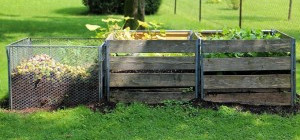 Whether you live in a cold climate or you’re in an area that is about to turn icy just for the winter, there’s no reason that you can’t have a flourishing garden. With cold-climate gardening, you need to have a few tips and tricks up your sleeve, however. We’ve put together 5 flourishing tip, so your garden can be thriving no matter the temperature.
Whether you live in a cold climate or you’re in an area that is about to turn icy just for the winter, there’s no reason that you can’t have a flourishing garden. With cold-climate gardening, you need to have a few tips and tricks up your sleeve, however. We’ve put together 5 flourishing tip, so your garden can be thriving no matter the temperature.
1.Don’t forget to winter clean
Cleaning shouldn’t just be reserved for spring time.
As the colder months set in, it’s vital that you ensure your garden is free from disease. One of the best ways to do this is disposing of all spent plant material, including: dead plants, old vegetables, as well as anything else that may damage the health of your garden. Moreover, if your garden has any support structures – such as bean stalks, garden lights or trellises – remember to thoroughly clean them with a solution of water and bleach.
Lastly, remember to weed your garden regularly. Weeds are the first seeds that will germinate when summer rolls around, so you need to ensure your garden is rid of them well before they have the chance to grow come spring.
2.Carefully select your plants
Although it can be easy to think that all plants need warm, sunny climates, this blog should be testament enough that this is simply not the case. Some plants thrive off winter, and if you’re residing in a cold climate, these are the plants you should focus on. For instance, think about planting some cold-climate veggies such as broccoli, cauliflower, cabbage, peas, brussel sprouts, turnips, beets, radishes, rutabagas, and baby carrots. If you’re looking for some aesthetically pleasing greenery, try planting cheery pansies, snapdragons or English daisies.
3.Give it some mulch
Mulch is a great tool that has many benefits for your garden, especially in winter or in colder climates. Helping to moderate soil temperature, mulch helps to keep the roots of your plants regulated and moist. This is particularly important in cold climates where your plants may wither in harsh, brisk and windy conditions.
As well as this, mulch also acts to prevent soil erosion, protection your garden from rain and wind. If you’re looking for an extra DIY project, why not make your own mulch mix? Compost annual plants such as vines and climbing plants. Although it’s not the exact same as mulch, this mixture can still help lock in your soil’s existing nutrients.
4.Test the soil
To ensure that your garden has the best fighting chance of fighting cold climates or winter, it’s paramount that you test the pH level of your soil. You can easily get a pH kit from your local garden or hardware store, or you can invest in an electronic tester. For a veggie garden, you’re aiming for a pH level between 6.3 and 6.9. If your pH reading is above 7, that means that your soil is too alkaline, and that you should add some sphagnum peat moss or elemental sulfur to balance it out. If your pH reading is below 6, that means your soil is too acidic, and you can try to increase the level with lime.
5.Construct the perfect compost
Every good garden has a thriving compost bin, even in cold climates!
As the seasons change, ensure that you take advantage of the dead leaves and other natural debris and add this to your compost bin. For instance, fallen leaves are gardening gold. They can be used to make compost, mulch and leaf mold. This way, you’re both cleaning your garden of debris and also adding to your stockpile of useful garden goodies for the season to come.
In summation, ensure that you don’t forget to clean for the impending colder months.
Then, carefully select your plants, employ some useful mulch and don’t forget to test the soil. Stick to these 5 tips to ensure that your garden will stay beautiful, no matter the weather.







